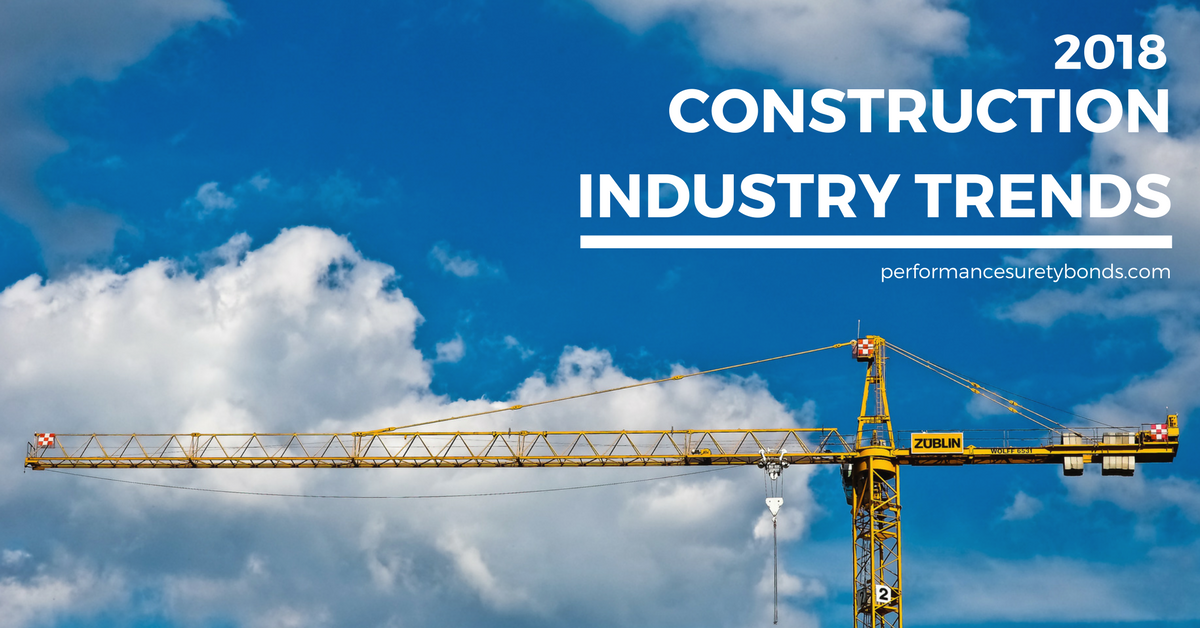
Staying ahead of the game is vital if you want your construction business to be a success. So what trends should you expect to see and what changes will you need to adopt to keep your business moving forward in 2018?
-
- Automated Digital Progress Tracking
The advancement of technology including Internet connected devices, drones, and big data will lead to a growth in businesses using technology for advanced construction project tracking. Nick Hertzman of construction software start-up Unearth says, “The biggest change that’s going to start happening over the next year is a rise in the use of digital progress documentation to automatically track and store activity across construction sites.” The adoption of evolving technology will give construction firms the ability to create detailed digital 3D maps of construction sites and monitor daily progress using drones and IoT connected devices. This improved tracking will help with job progress by providing digital evidence of everything that happens on the construction site.
- Improved Communication Leading to Flatter Organizational Structures
The construction industry will see an increase in the use of mobile devices to help improve communication. Mobile devices give contractors direct access to other individuals working on a project allowing them to make informed decisions quickly. Yves Frinault, co-founder of on-site construction app Fieldwire, believes, “Connected apps and mobile collaboration tools are providing leverage and connectivity to individual workers on-site. This is reducing and decentralizing management. We are therefore likely to see flatter, more efficient project organizations appear with less hierarchical levels at construction companies and sites.” This mobile technology also enables on-site workers to instantly access important job data stored in the cloud helping limit delays and improve productivity.
- Labor Shortages
2018 will see a continued shortage of skilled labor, which will not only drive up costs but also make it difficult for jobs to be completed on time. This lack of key labor will have a long-reaching impact as general contractors find it difficult to find qualified sub-contractors to complete large projects. Scott Peper partner at short-term contractor lending company Mobilization Funding thinks, “There is a significant shortage of labor in the marketplace and general contractors have squeezed the sub-contractor community to the point where without significant capital or much better payment terms sub-contractors will not be able to maintain their performance levels. For bonded jobs, this will become even more impactful since more and more of the sub-contracting community is less bondable every day.” With surety bonds now required for many federal and private construction projects, this lack of key talent could heavily limit which jobs construction firms are able to bid for.
- Improved Risk Management Through Remote Monitoring
Risk management is a key part of the construction industry that will experience drastic change over the next 12 months. Dr. Sergey Sundukovskiy, co-founder of daily reporting app Raken points out, “the major challenges of the construction industry are improving construction site compliance […] and using technology to ward off litigation.” Traditionally, construction companies have stuck with traditional methods of not only trying to keep on top of safety procedures but also to document ongoing work on job sites. These methods have left businesses open to increased risk as it’s easy to miss tasks or lose vital paperwork. In fact, Sundukovskiy also pointed out that the construction industry is, “one of the last industries to really embrace tech.” But technology is evolving rapidly and offers an affordable way for construction firms to remotely monitor their staff to limit accident potential and digitally document job activity on a daily or even hourly basis to mitigate the potential for disputes. Hertzman of Unearth believes software will help construction firms collect and store an immense amount of data, “providing incontrovertible proof that they did their due diligence.”
- A Strong Year for Construction Surety Bonds
Surety bonds underpin the construction industry by ensuring that clients have the confidence to work with a business, acting as a gatekeeper to prevent under qualified businesses from bidding on projects, and providing a claim resource to protect clients, suppliers and sub-contractors. So what trends will the construction surety bond industry see in 2018? Executive Vice President and Senior Underwriter of Viking Bond Service Thomas C. Buckner predicts, “The surety marketplace will continue to remain soft through 2018 in which we will see lower premiums and reduced underwriting conditions.” The growth in bonds issued is a positive sign for the construction industry but will require a number of key changes for surety bonding companies to keep up with the increased demand. Bruckner also focused on the need for technology, “Automation will be necessary to keep up with demand while keeping cost low as the surety’s margins on new business deteriorate due to aggressive rate decreases across numerous class codes.”
What construction industry trends do you predict for 2018? Let us know on Facebook or Twitter!

